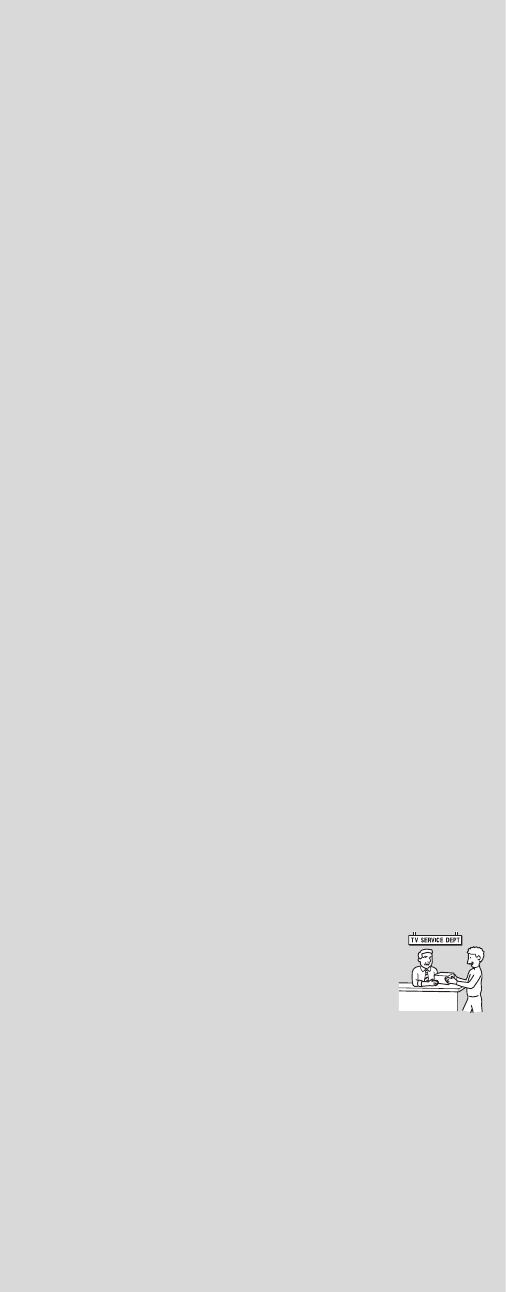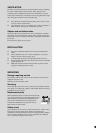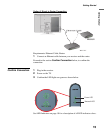
5
VENTILATION
The holes on the side of the receiver are provided for necessary ventilation.
To ensure reliable operation of the receiver, and to protect it from
overheating, these ventilation holes must never be blocked or covered.
Unless proper ventilation is provided, the receiver may gather dust and get
dirty. For proper ventilation, observe the following:
s Never block the ventilation holes by placing the receiver on a bed,
sofa, rug or other similar surface.
s Never place the receiver in a confined space, such as a bookcase or
built-in cabinet, unless proper ventilation is provided.
Objects and ventilation holes
Never push objects of any kind into the receiver through the ventilation
holes as they may touch dangerous voltage points or short out parts that
could result in a fire or an electric shock. Never spill liquid of any kind on
the receiver.
Do not place any objects on the receiver.
INSTALLATION
s The receiver should be installed near an easily accessible power
outlet.
s Do not install the receiver in a hot or humid place, or in a place
subject to excessive dust or greasy vapor.
s Avoid operating the receiver at temperature below 41°F (5°C).
s When mounted to the back of TV, do not use the receiver as a handle
to pick up the TV set.
s Make sure that the cord and connected cables are placed so that
tripping or stumbling may be avoided.
SERVICING
Damage requiring service
If the surface of the receiver cracks, do not touch the receiver until you
unplug the AC power cord.
Otherwise electric shock may result.
Servicing
Do not attempt to service the receiver yourself since opening the cabinet
may expose you to dangerous voltage or other hazards. Refer all servicing
to qualified service personnel.
Replacement parts
When replacement parts are required, be sure to have the
service technician certify in writing that he/she has used
replacement parts specified by the manufacturer that
have the same characteristics as the original parts.
Unauthorized substitutions may result in a fire, an
electric shock or other hazards.
Safety check
Upon completion of any service or repairs to the receiver, ask the service
technician to perform routine safety checks (as specified by the
manufacturer) to determine that the receiver is in safe operating condition,
and to so certify. Should the receiver not be repairable, ask a qualified
service technician to dispose of the receiver.
5


















